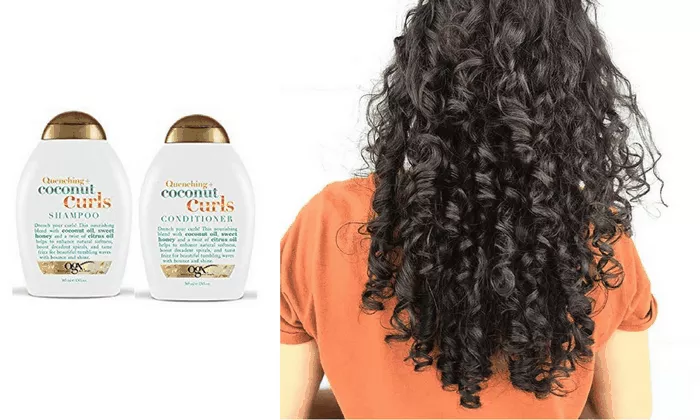Frizzy hair can be a daily struggle for many individuals, leading them on a quest for the perfect hairbrush to tame those unruly locks. The right hairbrush can make a significant difference in managing frizz and promoting smoother, healthier-looking hair. In this article, we will explore the various factors to consider when choosing a hairbrush for frizzy hair and delve into some top recommendations.
Understanding Frizzy Hair: The Culprit Behind the Frizz
Before delving into the world of hairbrushes, it’s essential to understand what causes frizzy hair. Frizz occurs when hair is dry and lacks moisture. Factors such as humidity, excessive heat styling, and harsh chemical treatments can strip the hair of its natural oils, leading to frizz. The cuticle layer of the hair becomes rough and raised, causing the strands to stand out and creating that dreaded frizzy appearance.
See Also: A Full Guide to Straightening Your Hair Without Relaxer
The Importance of Choosing the Right Hair Brush
Selecting the right hairbrush is crucial in managing frizzy hair. The right brush can help distribute natural oils, minimize breakage, and smooth the cuticle layer. Here are some key factors to consider when choosing a hairbrush for frizzy hair:
1. Bristle Type: Opting for Natural Bristles
Frizzy hair requires a gentle touch, and natural bristle brushes are often the best choice. Boar bristle brushes, in particular, are known for their ability to distribute natural oils from the scalp down to the ends of the hair, promoting shine and reducing frizz. These brushes are gentle on the hair, preventing breakage and damage.
2. Brush Shape: Paddle Brushes for Smoothing
Paddle brushes are excellent for tackling frizz, thanks to their wide, flat surface. They cover more significant sections of hair, making detangling and smoothing a breeze. Paddle brushes are particularly effective for those with thick or long hair, providing efficient results with fewer strokes.
3. Ionic Technology: Minimizing Static
Consider brushes with ionic technology, which helps minimize static and frizz. Ionic brushes release negative ions that neutralize positive ions in the hair, reducing static electricity and smoothing the cuticle. This technology is especially beneficial for frizzy hair prone to flyaways.
4. Handle Material: Opting for Anti-Static Materials
The material of the brush handle can also play a role in managing frizz. Anti-static materials, such as rubber or silicone, help prevent the build-up of static electricity, keeping frizz at bay. Look for brushes with handles designed for a comfortable grip and easy maneuverability.
Top Recommendations for Hair Brushes for Frizzy Hair
Here are our top recommendations for hair brushes for curly hair:
1. Mason Pearson Boar Bristle Brush
Renowned for its quality and effectiveness, the Mason Pearson boar bristle brush is a classic choice for those battling frizz. The combination of boar bristles and nylon tufts allows for gentle detangling and smoothing, leaving hair looking polished and frizz-free.
2. Tangle Teezer Thick & Curly Hairbrush
Specifically designed for thick and curly hair, the Tangle Teezer is a game-changer in the world of detangling brushes. With flexible bristles that glide through the hair without pulling or snagging, it’s an excellent choice for minimizing frizz while maintaining the natural curl pattern.
3. Olivia Garden Ceramic + Ion Thermal Brush
For those who use heat styling tools, the Olivia Garden Ceramic + Ion Thermal Brush is a fantastic option. The ceramic barrel and ionic technology work together to reduce frizz and create a smooth, shiny finish when blow-drying.
Caring for Your Curls: Tips for Combing Curly Hair
Curly hair is a unique and beautiful texture that requires a specific approach when it comes to combing and detangling. Unlike straight hair, curls can be more prone to tangles and breakage. To maintain the health and definition of your curls, follow these tips for combing curly hair.
1. Use a Wide-Tooth Comb or Your Fingers
When it comes to combing curly hair, the tool you choose is crucial. Opt for a wide-tooth comb or, better yet, your fingers. These wider spaces between the teeth help to prevent snagging and breakage. Fingers, being more flexible, can gently detangle knots without causing stress to the hair shaft.
2. Detangle When Wet
Curly hair is most manageable when wet. Apply a generous amount of conditioner to your hair in the shower and use a wide-tooth comb or your fingers to detangle. Start from the tips and work your way up to the roots, gently easing out knots without causing unnecessary breakage.
3. Section Your Hair
If you have particularly thick or long curls, it can be helpful to divide your hair into sections before combing. This not only makes the detangling process more manageable but also ensures that you address each section thoroughly, reducing the likelihood of missed knots.
4. Work in Small Sections
Rather than trying to comb through your entire head at once, work in small sections. This approach allows you to give attention to each part of your hair, making the detangling process more effective and less stressful for your curls.
5. Use a Leave-In Conditioner or Detangling Spray
Applying a leave-in conditioner or detangling spray before combing can make the process smoother. These products add moisture to your hair, making it more pliable and reducing friction during combing. Look for products with ingredients like glycerin, aloe vera, and silk proteins that help with slip and hydration.
Conclusion: Embracing Smooth, Frizz-Free Hair
Choosing the best hairbrush for frizzy hair involves considering factors such as bristle type, brush shape, ionic technology, and handle material. By selecting a brush tailored to your hair’s specific needs, you can unlock the secret to smoother, frizz-free tresses. Experiment with different brushes and find the one that works best for you, helping you embrace the beauty of smooth and manageable hair every day.


